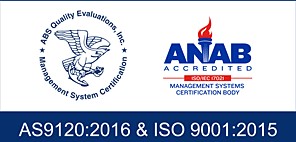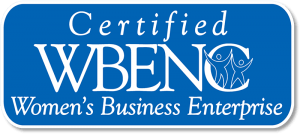TITANIUM DISTRIBUTOR
ALL ABOUT TITANIUM AEROSPACE PRODUCTS

Titanium is 30% stronger than steel, but is nearly 50% lighter. Titanium is 60% heavier than aluminum, but twice as strong. Titanium has excellent strength retention to 1,000 degrees Fahrenheit. Titanium is alloyed with aluminum, manganese, iron, molybdenum and other metals to increase strength, to withstand high temperatures, and to lighten the resultant alloy. Titanium’s high corrosion resistance is also a valuable characteristic; as when exposed to the atmosphere, titanium forms a tight, tenacious oxide film that resists many corrosive materials, particularly salt water.
In the 1950s, the titanium metal industry was established primarily in response to the emerging aerospace industry, which used it in the manufacture of airframe structural components and skin, aircraft hydraulic systems, air engine components, rockets, missiles, and spacecraft, where these properties are invaluable. The military also uses titanium in its guided missiles and in artillery. Other practical applications have evolved over time such as shipbuilding: in submarines, ship’s propellers, shafts, rigging, and other highly corrosive parts. Titanium is being increasingly utilized for medical applications due to its lightweight, its strength, and its hypoallergenic properties, as titanium is also nickel free. Titanium products are becoming increasingly utilized in other industries as well, from petrochemical applications to sporting goods.
For more information or to receive a prompt titanium alloy price quote, please contact us at 800 398-4345 or 954-977-0666 or submit the INSTAQUOTE Form.
SHEET, PLATE & COIL
|
Sizes: Sheets & Plate
0.012" TO 4.00" x R/W x R/L Sizes: Coil 0.001" TO 0.011 x R/W x R/L | GRADE | SPECIFICATIONS |
|---|---|---|
| 6AL-4V, 6AL-4VELI |
AMS-4911, 4907, 4905, MIL-T-9045 ASTM-F136, DMS-1592, GM3103, 12TM-B265 |
|
| 6AL-2SN-4ZR-2MO |
AMS-4919, MIL-T-9046, DMS-2275, AMS-T-9046, GM-3104, B50TF21 |
|
| 6AL-6V-2SN | AMS-4918, MIL-T-9046, DMS-1879, AMS-T-9046 | |
|
5AL-2.55N, 5-2.5 ELI |
AMS-4909, 4910, MIL-T-9046, AMS-T-9046 | |
| BAL-1MO-1V | AMS-4915, 4916, DMS-1784 | |
| CP-GRADES 1,2,3,4 | AMS-4900, 4902, MIL-T-9046, AMS-T-9046, DMS-1536, ASTM-B265 | |
| 15V-3CR-3SN-3AL | AMS-4914 |
ROD, BAR & FORGINGS
| Full Range Of Sizes In All Grades | GRADE | SPECIFICATIONS |
|---|---|---|
| 6AL-4V, 6AL-4VELI | AMS-4928, 4930,4965, 4967, MIL-T-9047, AMS-T-9047, ASTM-F-367 | |
| 6AL-2SN-4ZR-2MO | AMS-4975, MIL-T-9047, AMS-T-9047 | |
| 6AL-6V-2SN | AMS-4978, MIL-T-9047, AMS-T-9047 | |
| 5AL-2.55N | AMS-4926, 4966, MIL-T-9047, AMS-T-9047, B50TF22 | |
| 8AL-IMO-IV | AMS-4972, 4973, MIL-T-9047, AMS-T-9047 | |
| CP-GRADES 1,2,3,4,7 | AMS-4921, MIL-9047, ASTM-B-348, ASTM-F-67 |
TUBING
| Full Range Of Sizes In All Grades | GRADE | SPECIFICATIONS |
|---|---|---|
| CP-GRADES 2,3,4 | AMS-4941, 4942, BMS-7-21, DMS-1872, 1874, 1898 | |
| 3AL-2.5V | AMS-4943, 4944, 4945, DMS-2241, B50TF35, PWA-1260 |
EXTRUSIONS
| Full Range Of Sizes In All Grades | GRADE | SPECIFICATIONS |
|---|---|---|
| 6AL-4V | AMS-4934, 4935, MIL-T-81556 | |
| 6AL-6V-2SN | AMS-4937, MIL-T-81556 | |
| 8AL-IV-IMO | AMS-4933 |
COMMERCIALLY PURE TITANIUM SHEETS
| GRADE |
BRITISH STANDARD | FRANCE |
GERMAN AEROSPACE |
|---|---|---|---|
| Gr. 1 | BS 2TA 1 | T-35 | 3.7024 |
| Gr. 2 | BS 2TA 2 | T-40 | 3.7034 |
| Gr. 3 | DTD5023 | T-50 | 3.7054 |
| Gr. 4 | BS 2TA 6 | T-60 | 3.7064 |
ON-TIME DELIVERY
TECHNICAL DATA SHEETS
Titanium Grade 1 is an unalloyed, low strength titanium product containing low oxygen with high formability; this titanium grade is used in airframes, heat exchangers and desalination units.
Titanium Grade 2 is an unalloyed, medium strength titanium product. This titanium grade is used in airframes, aircraft engines, and marine parts; good weldability and corrosion resistance are its distinguishing characteristics.
Titanium Grade 3 is an unalloyed, high strength, titanium product providing excellent corrosion resistance and good weldability. This titanium grade is primarily used in airframe and aircraft engine parts.
Titanium Grade 4 is the highest strength pure unalloyed titanium product. This titanium grade is used almost exclusively for airframe, aircraft engine parts, marine, surgical implants, hydraulic tubing. Good formability and corrosion resistance are its hallmark.
Titanium Grade 5 (6AL-4V) is an alloyed titanium product containing 6% Aluminum and 4% Vanadium; is a medium strength product. This titanium grade is predominantly used in airframe and turbine engine parts; and for use in surgical implants.
Titanium Ti-6Al-4V (Grade 5), Annealed
Titanium Ti-6Al-4V (Grade 5), Annealed Bar
Titanium Ti-6Al-4V (Grade 5), STA
Titanium Ti-6Al-4V (Grade 5), STA Bar
Titanium 6AL – 4V ELI is an alloyed titanium product containing 6% Aluminum and 4% Vanadium, ELI (Extra Low Interstitial).
Titanium Ti-6Al-4V (Grade 5), ELI, Annealed
3AL-2.5V is an alloyed titanium product containing 3% Aluminum and 2.5% Vanadium
3AL-2.5V, Alpha-Beta Annealed, Quenched
3AL-2.5V, Beta-Annealed, 950ºC
3AL-2.5V, ST 925ºC, Aged 480ºC
5AL–2.5Sn & ELI (5-2.5) is an alloyed titanium product containing 5% Aluminum and 2.5% Tin. Also ELI (Extra Low Interstitial).
6AL–2Sn–4Zr–2Mo (6-2-4-2) is an alloyed titanium product containing 6% Aluminum, 2% Tin, 4% Zirconium, 2% Molybdenum.
6AL–2Sn–4Zr–2Mo (6-2-4-2), Duplex Annealed
6AL–2Sn–4Zr–2Mo (6-2-4-2), Sheet
6AL–6V–2Sn (6-6-2) is an alloyed titanium product containing 6% Aluminum, 6% Vanadium, 2% Tin.
6AL–6V–2Sn (6-6-2), STA 870ºC/565ºC
6AL–6V–2Sn (6-6-2), STA 910ºC/540ºC
8AL–1Mo – 1V (8-1-1) is an alloyed titanium product containing 8% Aluminum, 1% Molybdenum and 1% Vanadium.
8AL–1Mo – 1V (8-1-1), Annealed 8 hr at 790ºC (1450ºF)
8AL–1Mo – 1V (8-1-1) Duplex Annealed
8AL–1Mo – 1V (8-1-1) Beta Annealed, Aged
8AL–1Mo – 1V (8-1-1) Beta Solution Treated
8AL–1Mo – 1V (8-1-1) ST 980ºC (1800ºF), Aged 595ºC
15V–3Cr–4AL–3Sn (15-3-3-3) is an alloyed titanium product containing 15% Vanadium, 3% Chromium, 4% Aluminum, 3% Tin.
15V–3Cr–4AL–3Sn (15-3-3-3), Solution Treated
15V–3Cr–4AL–3Sn (15-3-3-3), ST 790ºC, Aged 480ºC
15V–3Cr–4AL–3Sn (15-3-3-3), ST 850ºC (1560ºF), Aged 545ºC
STILL HAVE ANY QUESTIONS? IS SOMETHING UNCLEAR? DO NOT SEE WHAT YOU ARE LOOKING FOR? AEROSPACE SPECIFICATION SERVICES FRIENDLY SALES TEAM IS WAITING FOR YOUR CALL AT 800-398-4345 OR SEND US AN EMAIL


